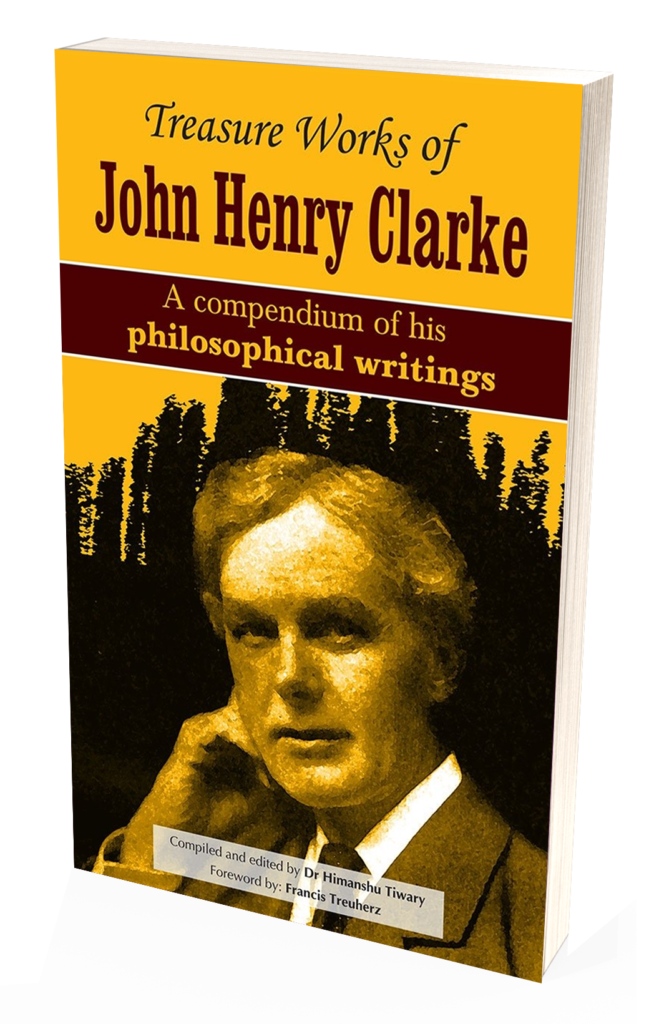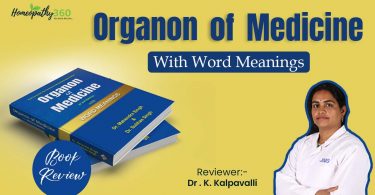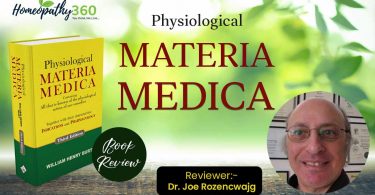
Book compiled and edited by Dr Himanshu Sekhar Tiwary
Forward by Francis Treuherz
Paperback: 468 pages
Price: Rs. 399
Publisher: B Jain Publishers Pvt Ltd (2019)
ISBN-10: 8131963896
ISBN-13: 978-8131963890
Author
Dr Himanshu Sekhar Tiwary, a very well known name in the subject of organon of medicine and Homeopathic literature. He is one of the strongest voices in India for the revival of original and time tested literature of homeopathy. His past contribution to the treasure works of P Schmidt as well as therapeutics of cancer from masters of homeopathy is already well appreciated by the profession. He is presently serving as medical Officer in CGHS, New Delhi, Govt. Of India.
Review by Prof.(Dr.)Subhasish Ganguly.
P.G.Coordinator & H.O.D., Organon of Medicine
D.N.De Homoeopathic Medical College & Hospital, Kolkata, Govt. of West Bengal.
To know- to believe and to feel, the steps of gaining knowledge & wisdom; the compiler and editor of this book has made it possible to know and to make feel what Dr. John Henry Clarke has written. Many confusions are cleared due to expression in lucid language. MCQ readers and thinkers both will be benefited by reading this book. Many chapters and topics are discussed in not too many pages after pages.
Tumour treatment, quasi specifics, process vs result, real meaning of chronic disease, dispensing medicines by Homoeo chemist or Homoeopath who is more dependable, Grauvogl’s contribution,real meaning of likes, differing with Hahnemann are clearly mentioned in this book.
It will be helpful not only to Post graduate students but to the profession and to perceive the essence of writings of John Henry Clarke as well as Homoeopathic philosophy & B.Jain Publishers(P) Ltd. has made it possible.
Reviews on different sections By Dr Yogesh Niturkar:
“As Hahnemann’s heirs, much remains for us to accomplish. He has shown us the better way; it is for us to go En Avant*” (*French word, meaning forward/onward) – J H Clarke.
The Revolution in Medicine was the seventh Hahnemannian oration delivered by John H. Clarke (1853-1931) on 5th October, 1886 at the London Homoeopathic Hospital. In his oration, Clarke has expressed the journey of Hahnemann from his birth place Meissen, in Saxony, family environment, his struggle, accomplishments and the prevailing medical scenario of that era. Clarke has categorised his oration under 4 headings where he has explained how Hahnemann had revolutionised the medical world. The oration covers all aspects of Hahnemann, the man, the physician, translator, medical philosopher, founder of scientific therapeutics, about his contribution and literary work. The headings of the oration are (a) Darkness & Dawn Night {1786, Hahnemann, A Reformer Not A Destroyer, In The Valley Of The Shadow, Dawn} (b) The Three Fold Work {Cleansing The Augean Stable, Constructive And Defensive, Unexpected Allies} (c) The Revolution & The Man {1786 And 1886, Medical Dogberry’s, The Man} (d) Our Inheritance {The Revolution Not Complete, “Medical Ethics”, En Avant!}
Clarke has concisely summarised Hahnemann’s untiring efforts for the search of evidence based truth. The journey of Hahnemann was full of struggles and opposition but multiple helping hands of his family members, teachers, friends, disciples and patients played a pivotal role in shaping the future of medicine. The struggle with adverse circumstances began in Hahnemann’s childhood; and there can be no doubt that this early lesson in enduring hardship formed one of the most important elements in the training for his later life. Hahnemann’s thirst for knowledge, intense passion and wonderful aptitude for learning earned special attention of his school Principal Herr Miiller, Quarin the physician in ordinary to the emperor and many other resourceful persons. He also got monetary exemption of paying school and college fees.
Readers can witness through words how Hahnemann moved from Meissen to Leipzig to study medicine then to Vienna for practical medicine, then MD degree at Erlangen, then Dessau to Gommern where he got married to Henriette Kuchler. Then he went to Dresden and stayed there for 6 years and published Pharmaceutical Dictionary. How Hahnemann freely criticised the practise of fashionable physicians and their violent measures. One can perceive why Hahnemann in despair reached to the thought of “everlasting no” to medical practise and moved back to Leipzig and started translation of books. This was the darkest hour before the dawn.
At that moment, Hahnemann was engaged in translating Cullen’s Materia Medica from english into german and rest of the story is known to all of us. Hahnemann took care to make sure his ground before he made any definite announcement. His translation of Cullen was published in 1790. For six years, Hahnemann worked at the subject before he published his essay, “On a new principle for ascertaining the curative properties of drugs” in which the homoeopathic principle was first clearly made known to the world. Hahnemann was fully equipped and ready to enter on his life’s great work for which all before had been a preparation. At that time blood-letting, violent treatment of lunatics and polypharmacy was a routine medical practise which was openly protested by Hahnemann and he proved that human approach can treat an individual judiciously.
Hahnemann did not spend all his powers in fighting the abuses of his time. All the while, he was assiduously working out his idea, testing the action of medicines on his own healthy body and building up his system on the solid ground of his observed results documented in Materia Medica Pura and Organon of Medicine. Clarke also emphasised upon the cholera epidemic and how it helped Hahnemann to prove his system of therapeutics was far better than the existing practice of medicine. Such was Hahnemann and such was his work; destined to bring about a revolution fraught with the happiest consequences and carried forward by innumerable followers all over the world. At last, Clarke appeals to the fraternity of homoeopathy that Hahnemann had shown us the better way; it is for the homoeopathic fraternity that needs to go forward.
John H. Clarke has put forth “The Revolution & The Man” to whom we call as Hahnemann in just 51 pages which are worth reading and interesting to travel through that era which speaks about amidst all the political turmoil of his time and the storms of his own life, Hahnemann had accomplished a work having firm foundations; it is sure as the everlasting hills. Through this oration, one can learn that it was only by the immeasurably superior results of Hahnemann’s treatment over their own that the opposing section were “at long and last” induced to give up their barbarous practise, and to leave the sick man at least a chance of getting well. The oration depicts about the scenario from 1786 to 1886.
This oration has been published in a book format by B. Jain Publishers (P) Ltd and it is a worth possession for enthusiastic and serious readers of homoeopathy to witness “The Revolution of Homoeopathy” as well as the sense of responsibility towards the advancement of homoeopathy.
Life and work of James Compton Burnett, with an account of ‘The Burnett Memorial’ by Dr Clarke
“There is no resting ground in Homoeopathy; progress is the very breath of its existence.”
– J. H. Clarke
James Compton Burnett (1840–1901) was an english physician, a distinguished homeopath, author of many Homoeopathic books and editor of the journal, “Homoeopathic World”. The journal was one of the bonds that had bound together the writers and readers to homoeopathy. The impetus for this compilation lies in the close friendship of James H. Clarke, Burnett, Robert Cooper and Thomas Skinner. After the untimely death of Burnett, Clarke compiled various articles, write ups, notices, appeal and original work of Burnett in the form of a book.
The primary objective of this book was to put forth life sketch and work of Dr Burnett. The secondary objective was to showcase movement that took place after the death of Burnett to raise a fitting memorial of Dr Burnett in respect to his contribution in the homoeopathic world. Lastly, to present the working method of Burnett so that all can get influenced by his writings and master the method with which Burnett had obtained results.
In respect to the above objectives, Clarke has written 14 chapters; divided into three parts, viz. biographical, critical and the Burnett memorial. While going through these chapters, readers can easily perceive the evolution of Burnett, his conversion towards homoeopathy, his contribution and large number of followers in the form of friends, disciples and patients. All these various aspects of Burnett project the resultant need for raising a memorial in his name.
The part of this compilation highlighted by Clarke is as follows:
- Part I is titled as Biographical consists of preface showcasing the need of the present work, chapters on early life and genealogy, how Dr Burnett became a homoeopath, Dr Burnett’s editorship of the Homoeopathic World, Dr Burnett’s books, Dr Burnett’s heroes, Dr Burnett as farmer, last days and some notes of appreciation. This section is worth reading as it covers the making of Burnett as a homoeopath, researcher, author and a man who was not content to form opinions only but one who really knew and accepted facts only after confirmation.
Burnett highly admired John Drysdale, Dr A. E. Hawkes, Rademacher, H. Goullen, Hahnemann and Paracelsus. After the death of Burnett, numerous appreciatory notes were written by his friends, disciples and patients. The notes convey deep sentiments and the position of Burnett in everyone’s heart.
- Part II is titled as Critical constitutes of Dr Burnett’s methods of work, illustrations and conclusion. This section deals with how Dr Burnett was a physician par excellence and a true follower of Hahnemann. Clarke had focused upon Burnett’s firm conviction that all diseases are amenable to cure, if properly treated and in stages not too far advanced and that even in the latter case they may be arrested in their progress and brought down to a lower level. Burnett worked to widen the definition of homoeopathy in regard to the choice of the remedy and advocated choosing remedy on the basis of totality of symptoms, doctrine of signature and organ affinity. Apart from many of the concepts that Burnett had elaborated, Clarke put forth preface from several of his most important works to get a glimpse of vastness of Burnett’s contribution in the field of Homoeopathy.
- Part III is titled as ‘The Burnett Memorial’ consists of historical, the story of the silver sale and list of donations. This section focuses upon the number of proposals received to establish an enduring memorial in the honour of Dr Burnett.
In the interest of homoeopathy, Dr Buford’s proposal was accepted to form British Homoeopathic Association (BHA). The foundation of BHA was formed with the primary objective to create and endow lectureships. Fund raising was done to endow a chair to be called as Burnett Professorship of homoeopathic practise. Mrs. Clarke held a sale of silver articles suitable for Christmas. The articles were sold at ordinary prices to raise fund. Like Mrs. Clarke, many helping hands came forward to raise fund for Burnett’s professorship of homoeopathic practise.
After reading this book, one can become aware about how Burnett lived his life for the dissemination of homoeopathic knowledge and to teach as many as possible about what homoeopathy really is. Clarke has compiled this book in such a way that every reader can know how Dr Burnett had accepted the liberty that Hahnemann offered to him, i.e. recognition that the physician’s task is to deal with actual states and not merely on the names of states and the names of medicinal actions. This self explanatory compilation by J H Clarke is worth reading as it explains Burnett’s fight for the cause of homoeopathy till the last day of his life.
Bird’s Eye View A Lecture On Hahnemann’s Organon of Medicine
“Life is short; the art is long; the occasion is sudden, experience deceptive, and judgement difficult.” – Samuel Hahnemann
The era of scientific medical experimentation began with Master Hahnemann and his Organon of Medicine was an epoch making contribution in the field of medicine. Organon of Medicine was the first complete book on logic, philosophy, principles and methodology of Homoeopathic practise. It contains a complete and exhaustive exposition of Hahnemann’s discoveries, experiments and their conclusions. Many pioneers have penned their views and perceptions on Organon of Medicine. Amongst the various books or commentaries or reviews, Dr John Henry Clarke (1853-1931), a prominent Homoeopathic stalwart, had written a small book titled “Bird’s Eye View – A Lecture On Hahnemann’s Organon of Medicine”. The contents of the book are originally a lecture delivered at the London Homoeopathic Hospital as a part of the post graduate series. This 24-pages book have valuable data on analysis of the 5th edition of Organon of Medicine by Samuel Hahnemann published in 1833, translated by Dr R. E. Dudgeon in 1849, which was again revised in 1893 from which Clarke prepared these notes. This book serves as a sort of introduction and in-depth understanding of Organon in oder to simplify the subject and attract attention of young readers. The book contents are given under 4 chapters as mentioned below:-
1} Hippocrates and Hahnemann: The chapter focusses upon contributions of two legendary pioneers of medical world, i.e. Hippocrates with whom medical history had its beginning and Hahnemann with whom medical history began anew. The author has compared between the aphorisms of Hippocrates described as a well-ordered collection of excellent tips, and the Organon of Hahnemann described as an organic philosophy of medicine. The most important distinguishing feature about the Organon is its practicality. Leaving aside all the theoretical part, the bulk of Organon deals with the matters of facts and rules of practise.
2} Analysis of the Organon: Clarke has analysed “Introduction of Organon” as:
a) A survey of the medical treatment of the time.
b) Examples of homoeopathic cures from previous writers.
c) Testimony of physicians of earlier times as to the superiority of the homoeopathic principle.
Regarding the aphorisms, Clarke has divided it into two parts: the first comprising aphorisms 1 and 2 which focusses upon what the physician ought to be and what he ought to do. The remaining 292 deal with what he ought to know and how he ought to set about achieving his object. He had summarised 294 aphorisms under 3 headings as:
{a} the doctor’s raison d’etre (the most important reason or purpose for someone or something’s existence) and the nature of disease and medicinal action (aphorism 1 to 29),
{b} susceptibility of the organism to disease action and to medicinal action (aphorism 30 to 71), {c} acute and chronic diseases; homoeopathic aggravation; regimen and diet; pharmacy; animal magnetism (aphorism 72 to 294). Clarke has also emphasised about how Hahnemann had followed nature in formulating laws of homoeopathy.
3} Illustrative extracts from the work: This chapter isfurther subdivided into:
a) Extracts from “Introduction”: Clarke has mentioned key aspects of the introduction of Organon where Hahnemann has emphasised upon the body’s natural ability to heal itself. He stated about allopathic school concentration upon the material causes of disease and injurious mode of treatment which attacks the innocent human beings at the cost of much loss of strength and usually of great sufferings to the sick individual. On the contrary, he also explained the holistic approach of homoeopathy towards disease, its treatment and the restoration of health.
b) Extracts from the “Organon”: Clarke has described the following 3 categories:
(i) Opening paragraphs having aphorism 1 to 7.
(ii)The law having aphorism 25 to 27.
(iii) Acute and chronic diseases.
Clarke has mentioned about these aphorisms to highlight the monumental work of Hahnemann.
4} Conclusion: Clarke has concluded his book mentioning the footnote of aphorism 56 where Hahnemann has written about Isopathy and its principle. Lastly, he quoted from the 1849 edition of Organon (by translator Dr Dudgeon), “Organon is perfect & complete in itself, it leaves no point of doctrine unexplained, no technical detail untouched, no adverse argument unanswered.”
After reading this book, one can easily comprehend the work of Hahnemann and the principles of homoeopathy. This book is a significant and a valuable tool for the students, teachers, researchers and the practitioners in their service to humanity through homoeopathy.
Review by Dr Haresh Kumar Maharaj, Associate Professor, Dept. Of P.M, RBTS Govt Hom Med College & Hosp., MUZAFFARPUR
Dr Himanshu Tiwary, a well known young practioner has masterly crafted this book both for students and practitioner of Homoeopathy. The language and presentation made this book easy and handy.





